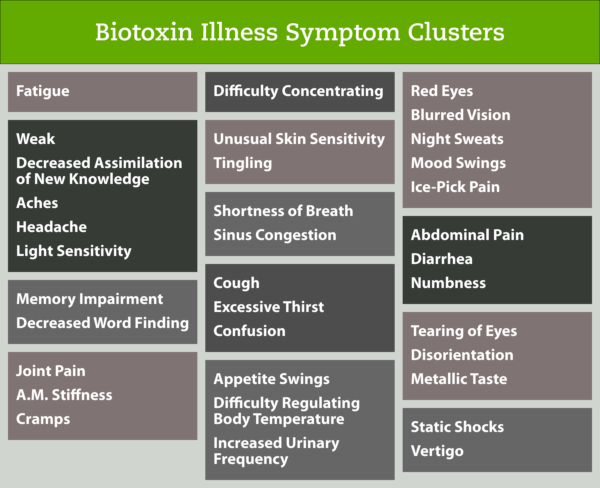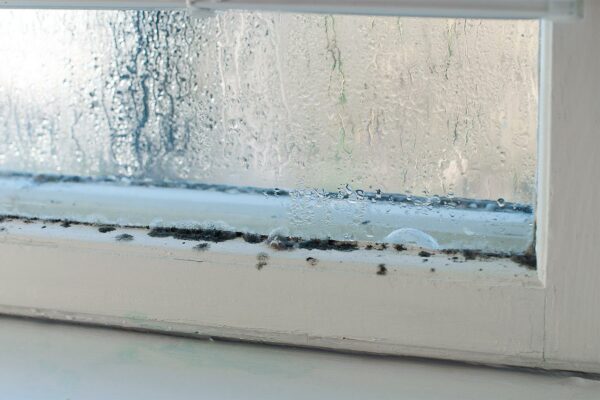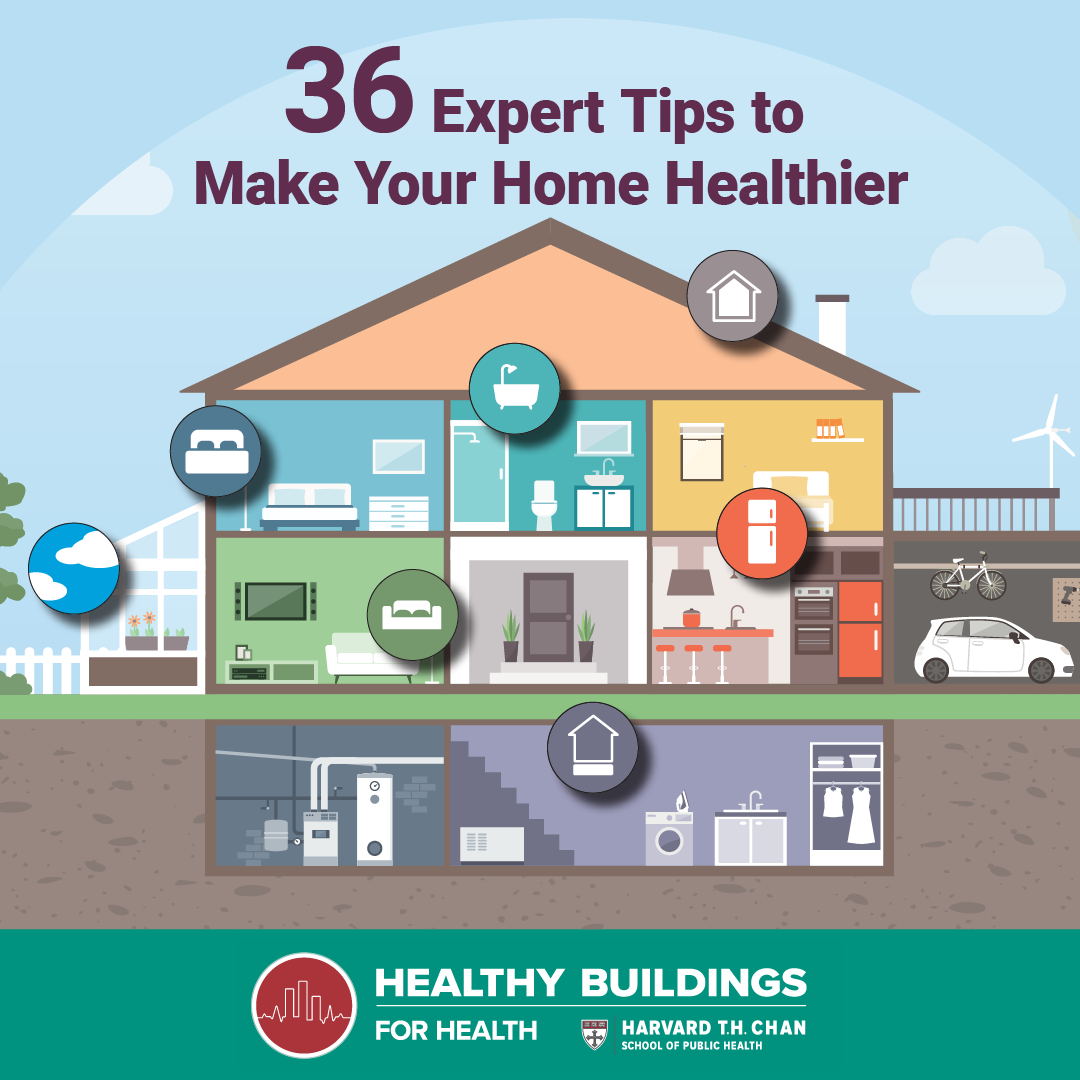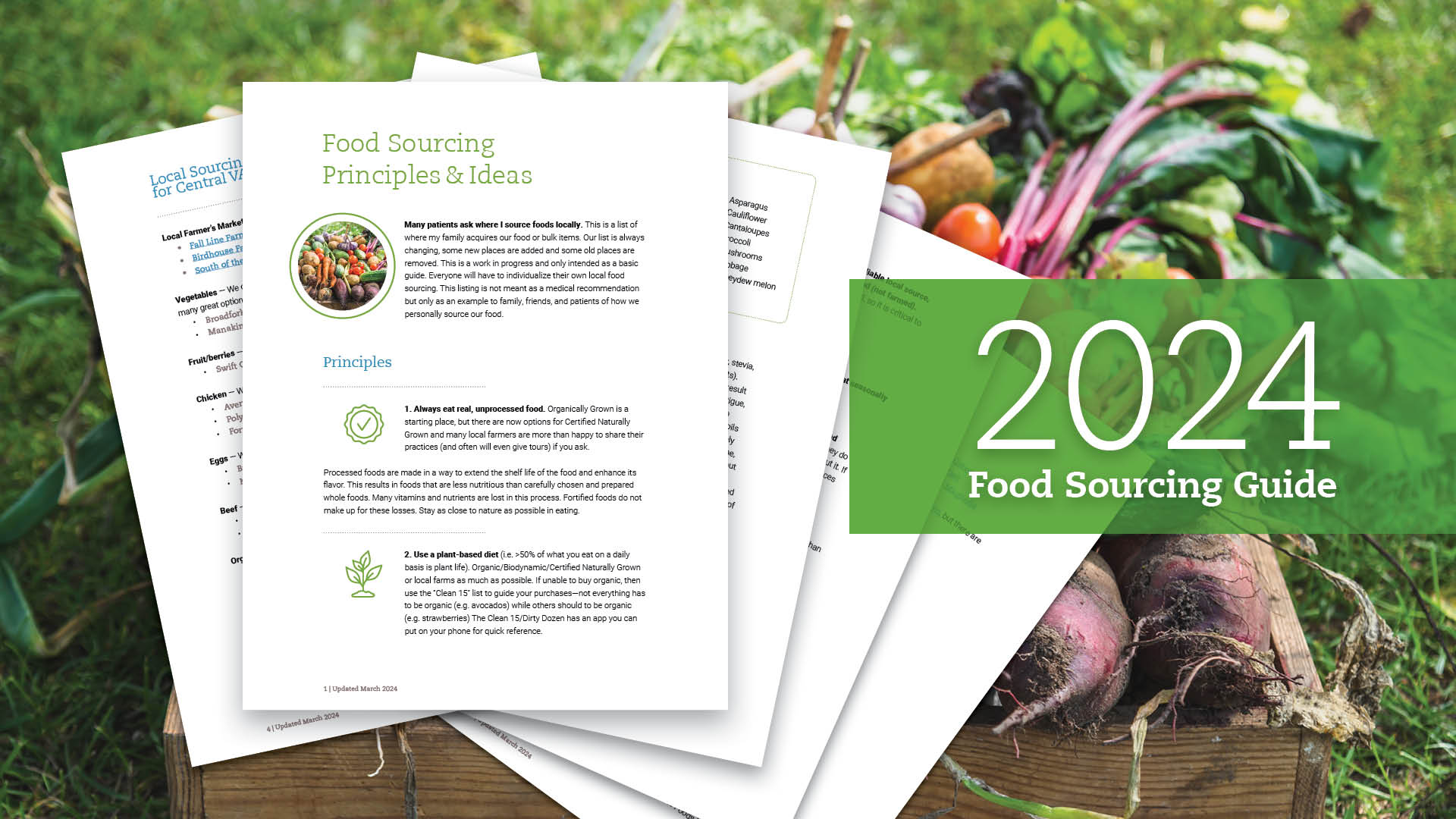CIRS: A New Paradigm for Chronic Disease | Part 1
Understanding Our Mold Problem

Dr. Aaron Hartman
October 14, 2018
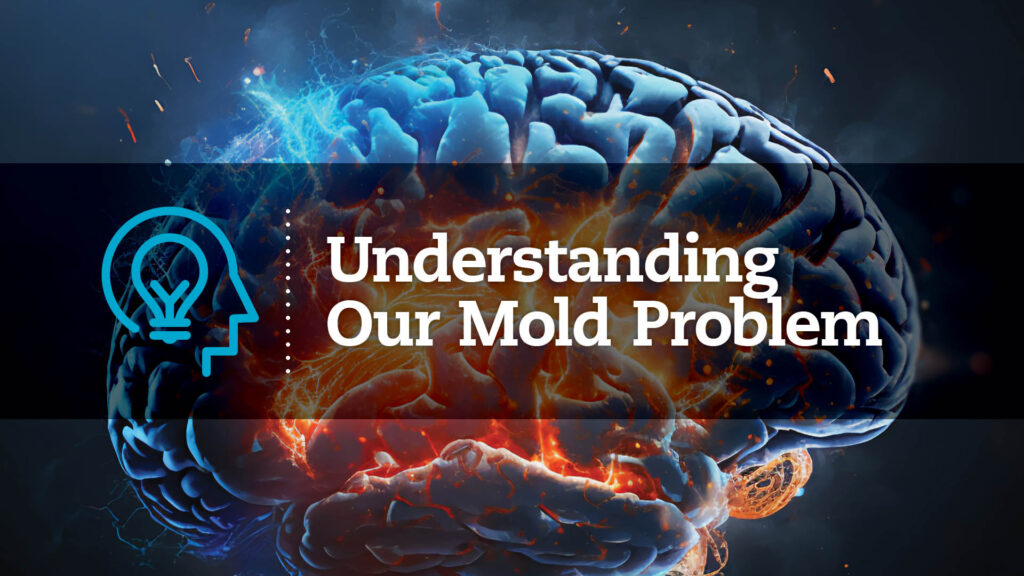
Subscribe
Never miss out on new content from Dr. Hartman.
“All truth passes through three stages. First, it is ridiculed. Second, it is violently opposed. Third, it is accepted as being self-evident.”—Arthur Schopenhauer (1788-1860)
“The reasonable man adapts himself to the world; the unreasonable man persists in trying to adapt the world to himself. Therefore, all progress depends on the unreasonable man.”—George Bernard Shaw
When Steve first saw me at our Functional Medicine Practice in Richmond, Virginia, in the Fall of 2016 he had already been through a lot. He had previously seen multiple specialists, had taken several medications, and only was getting worse. Steve played soccer in college and was planning to attend medical school that year, but his energy level was too low; he could not concentrate like he used to; he had sleep problems, and in addition to his loss of 20 pounds of muscle mass, he was chronically fatigued and hurt all over.
What was the mystery illness that Steve had acquired? Was it related to his old tick bite? Maybe this was just his new, onset hypothyroidism acting up? Was he merely stressed from all his work, or did he have (as his rheumatologist told him) fibromyalgia and chronic fatigue syndrome?
In this article series, I would like to discuss an entity that afflicts untold scores of people, is seen every day in primary care clinics across the country, and yet is commonly overlooked. Known as Mold-Related Biotoxin Illness, the exact name is Chronic Inflammatory Response Syndrome (or CIRS for short). In part I, I will define what is mold toxicity and briefly describe the potential disease load in our country. In part II, I will lay out its history of discovery and review the diagnostic process and pathology. Finally, in part III, I will describe a treatment protocol.
Part One:
Understanding Our Mold Problem
The Potential Disease Load
According to the current data from the Government Accounting Office (GAO) about 50% of buildings in the U.S. have some form of water damage.[1] Approximately 25% of the population has a genetic susceptibility to the accumulation of biotoxins (microscopic particles, gasses, and chemicals released from living organisms including bacteria, virus and fungi).[2] If 25% of the population has the genetic potential and 50% of buildings provide potential exposure, this entity could potentially be an unrecognized epidemic. CIRS can also spill over into the acquired immune system resulting in related autoimmune diseases like hypothyroidism, gluten immune sensitivity (the worst case scenario is Celiac), Lupus, Rheumatoid and others. Without large-scale population studies the exact extent of CIRS cannot be established; but suffice it to say, the potential is enormous.
If 25% of the population has the genetic potential and 50% of buildings provide potential exposure, this entity could potentially be an unrecognized epidemic.
Symptoms of Mold Toxicity
The list of symptoms that patients present to their practitioners’ offices is extensive. By the clinical definition, this is a multi-system, multi-symptom disease. The symptoms range from fatigue and headaches to aches, pains, and stiffness with tingling and numbness. The entire list of symptoms can be seen in the figure to the left. This complex system sounds like the cadre of patients who daily come through a primary care office: vertigo, dizziness, tingling, fatigue, headaches, stomach pain, diarrhea, blurred vision, etc.
What’s so Bad About a Little Mold?
So, what’s so bad about a little mold? After all, mold is everywhere, right? Well, the issue is not the mold itself but all the company it keeps. About 48 hours after a water leak/damage to a building with manufactured materials (e.g. gypsum board, engineered wood, composite materials), mold begins to grow-but not just mold: bacterial growth, off-gasing chemicals called mVOCs (microbial volatile organic compounds), and particulates from fungi are all released into the surrounding environment. This biotoxin cloud is what begins to activate a person’s innate immune system. Figure 2 below includes a partial listing of the composition of this toxic mold cloud. The particulates made by the bacteria and fungus can be as small as .4 microns and weigh as little as 40-1000 Daltons. In other words, this stuff is submicroscopic. One way to conceptualize this toxic cloud is to liken it to cigarette smoke. The particles in cigarette smoke are roughly the same size, contain gaseous toxins with micro-particulates, and can linger in the air column for months or longer. Consider, if an inconsiderate guest smoked in your home, how long would the smell linger? Weeks? Months? How would you filter it out? The basic concept applies to the micro-particulates and mVOCs associated with water-damaged buildings (WDB). Over time, these little guys can activate your innate immune system and cause systemic inflammation.[3]
One way to conceptualize this toxic cloud is to liken it to cigarette smoke … if an inconsiderate guest smoked in your home, how long would the smell linger? Weeks? Months? How would you filter it out? The basic concept applies to the micro-particulates and mVOCs associated with water-damaged buildings (WDB).”
Range of toxins, inflammagens, and microbes found in WDBs
- Mycotoxins
- Bioaerosols
- Cell Fragments
- Cell wall components
- Hyphal fragments
- Conida
- Beta Glucans
- Mannans
- Spirocyclic drimanes
- Inorganic xenobiotics
- Gram-negative bacteria
- Gram-positive bacteria
- Actinomycetes
- Nocardia
- Mycobacteria
- Protozoa
- Chlamydia
- Mycoplasma
- Endotoxins
- Lipopolysaccharides
- Hemolysins
- Proteinases
- Chitinases
- Siderophores
- Microbial VOCs
- Building material VOCs
- Coarse particulates
- Fine particulates
- Nano-sized particulates
The Discovery of CIRS
The story of CIRS discovery goes back to a small town country doctor living in Pocomoke, Maryland. Ritchie Shoemaker MD had recently graduated from medical school at Duke University and started his own practice in Pocomoke. In the Fall of 1997, thousands of fish were dying in the Pocomoke River near his home and practice. Many locals were getting sick with a mysterious illness associated with aches, pains, fatigue, brain fog, memory loss, and diarrhea. The usual medical labs came back negative, and standard therapies did not seem to help. To relieve the suffering of one of his patients, Dr. Shoemaker offered a medication called cholestyramine to treat her diarrhea. A few days later, this grateful patient notified Dr. Shoemaker that not only was her diarrhea gone but all her other symptoms as well. How could this be? Cholestyramine is not absorbed systemically; so, it could not be traveling through her whole body. It is an old-school cho lesterol medication that binds to bile and prevents its reabsorption in the GI tract (blocking the hepatobiliary circulation) and thus resulting in its elimination in the feces. Shoemaker surmised the cholestyramine was potentially removing some form of toxin from his patient’s bile.[4]
By coincidence, some fish kills in North Carolina in previous years were caused by a dinoflagellate called Pfiesteria. Shoemaker’s collaboration with health officials in NC led to the discovery of toxicity factors from Pfiesteria. Later, he consulted with the State of Florida and further developed the concept that biotoxins from blue-green algae could affect an individual’s health as well as that of wildlife. As his research progressed, Shoemaker found biotoxins associated with Lyme disease and-most importantly-exposure to indoor toxins from water-damaged buildings (WDBs). From this small beginning, our understand of CIRS has expanded to include biotoxins from the brown recluse spider bite, Pfiesteria, Ciguatera, blue-green algae, tick born infections including Lyme Disease-and the most common of all exposure-WDBs (making up 80% of CIRS patients). To learn more about Dr. Shoemaker’s story, his discoveries and how he became the premier researcher in CIRS, see his book titled Surviving Mold.[5-7]
References
- Stephenson JB, F. C., Anderson KB, Crothers N, Howe B, Johnson RP, Sloss N, Solomon R, Choy L, Derr M, Feldesman A, Horner T, Liles A, Moy L, Rhodes-Kline A. (2008). GAO-08-980. United States Government Accountability Office: Indoor Mold: Better Coordination of Research on Health Effects and More Consistent Guidance Would Improve Federal Efforts. U. S. G. A. Office. Washington, DC, GAO
- Shoemaker RC. Differential Association of HLA DR by PCR Genotypes with Susceptibility to Chronic, Neurotoxin-Mediated Illnesses. Poster presentation, American Society for Tropical Medicine and Hygiene. 2002 Nov 15, Denver CO.
- Shoemaker R, Mark L, McMahon S,Thrasher J, Grimes C. 2010.Policyholders of America. Research Committee Report on diagnosis and treatment of chronic inflammatory response syndrome caused by exposure to the interior environment of water-damaged buildings.
- Shoemaker R. Diagnosis of Pfiesteria-human illness syndrome. Maryland Medical Journal. 1997; 521-523.
- Shoemaker R, House D. Cyanobacterial Harmful Algal Blooms: State of the Science and Research Needs; Characterization of chronic human illness associated with exposure to cyanobacterial harmful algal blooms predominated by Microcystis. Hudnell HK, editor. 2009:653
- Shoemaker R, House D, Ryan J. Defining the neurotoxin derived illness chronic ciguatera using markers of chronic systemic inflammatory disturbances: A case/control study. Neurotoxicology and Teratology. 2010; 32:633-639.
- Shoemaker R, Hudnell D. A time-series study of sick building syndrome: chronic, biotoxin-associated illness from exposure to water-damaged buildings. Neurotoxicology and Teratology. 2004;1-18.
Since 2010, Richmond Integrative and Functional Medicine has been helping people to restore their health and hope with an integrative approach to conventional and alternative medicine that’s entirely science-backed. We at RIFM believe everyone is made for health. We offer a comprehensive, in-person patient membership program to ensure you get access to the care you need to thrive.
Posted in Detox, Mold / CIRS
